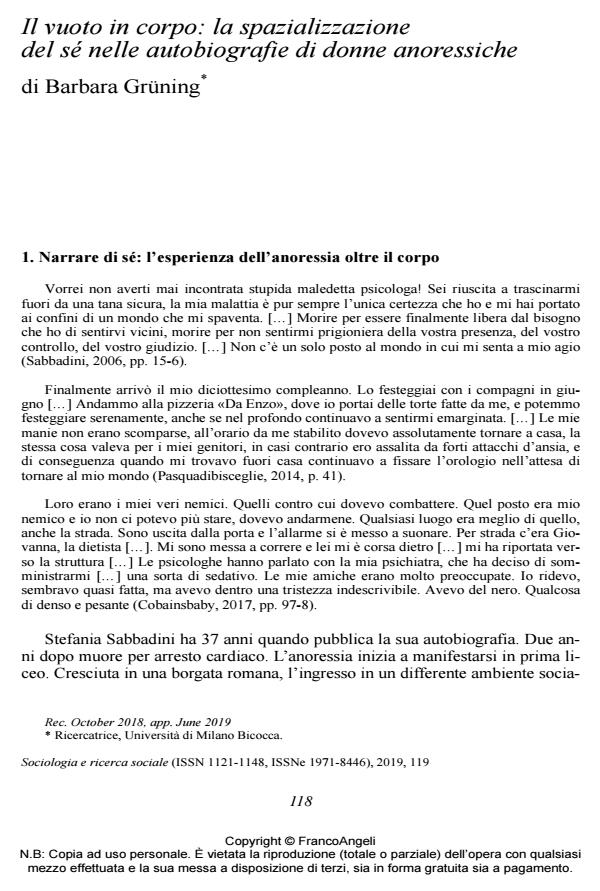Il vuoto in corpo: la spazializzazione del sé nelle autobiografie di donne anoressiche
Titolo Rivista SOCIOLOGIA E RICERCA SOCIALE
Autori/Curatori Barbara Grüning
Anno di pubblicazione 2019 Fascicolo 2019/119
Lingua Italiano Numero pagine 22 P. 118-139 Dimensione file 191 KB
DOI 10.3280/SR2019-119006
Il DOI è il codice a barre della proprietà intellettuale: per saperne di più
clicca qui
Qui sotto puoi vedere in anteprima la prima pagina di questo articolo.
Se questo articolo ti interessa, lo puoi acquistare (e scaricare in formato pdf) seguendo le facili indicazioni per acquistare il download credit. Acquista Download Credits per scaricare questo Articolo in formato PDF

FrancoAngeli è membro della Publishers International Linking Association, Inc (PILA)associazione indipendente e non profit per facilitare (attraverso i servizi tecnologici implementati da CrossRef.org) l’accesso degli studiosi ai contenuti digitali nelle pubblicazioni professionali e scientifiche
This essay focuses on the spatial perceptions of the body presented in twenty- one autobiographical narratives by Italian women who experienced anorexia or bulimia in the last three decades. The goal is not to present a picture of the social etiology of anorexia in Italy, but to highlight the importance of space as an analytic tool for understanding how anorexic women experience and construct their body and subjectivity in interaction with other social actors within spatialized social structures. The author proposes a sociological-phenomenological approach to thinking about anorexia spatially, starting from a multilayer understanding of space as material, social, symbolic and relational dimensions.
Parole chiave:Empty Bodies. The spatialization of Self in the autobiographies of anorexic women
Barbara Grüning, Il vuoto in corpo: la spazializzazione del sé nelle autobiografie di donne anoressiche in "SOCIOLOGIA E RICERCA SOCIALE " 119/2019, pp 118-139, DOI: 10.3280/SR2019-119006